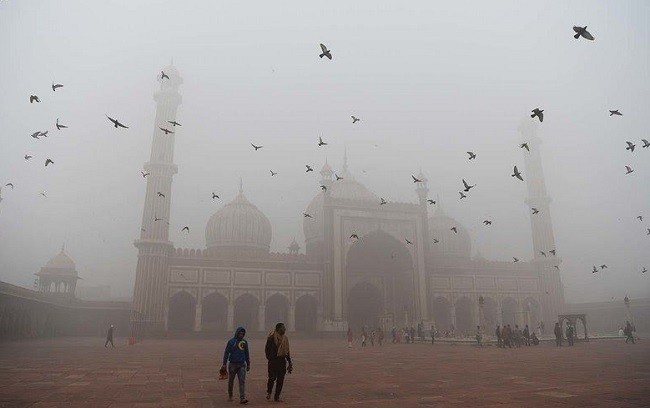
New Delhi: A day after a relatively clear sky in Delhi, the city’s air quality today again dipped with the AQI slipping to the ‘poor’ zone.
Breeze had cleared up the hazy sky yesterday bringing relief to people in the national capital, with the AQI recorded in the ‘moderate zone’ (194).
The city’s average Air Quality Index (AQI) today, however was 217, on a scale of 500, classified as ‘poor’.
From November 23 to December 5, the air quality in the city had remained ‘very poor’, with toxic smog disrupting normal life and even the India-Sri Lanka Test match at the Feroz Shah Kotla Stadium.
However, it had shown a marked improvement on December 6 from Tuesday’s index of 378.
According to the Central Control Room for Air Quality Management of the CPCB, the concentration of nitrogen dioxide (NO2) breached the 24-hour safe limit of 80 micrograms per cubic metre (ug/m3) in areas such as Anand Vihar (162.03) and Dilshad Garden (140.70) late this evening.
The smog in Delhi had even cast a shadow on the Test match, with captain Dinesh Chandimal and his team wearing N95 anti-pollution masks to combat pollution on Day Two.
The match ended in a draw on December 6 with Chandimal admitting that it was tough playing under pollution. Some of the Sri Lankan players had fallen sick.
On the day, the AQI had improved to ‘poor’ from ‘very poor’, Dipankar Saha, Air Lab Chief of the Central Pollution Control Board (CPCB), had said, “Air quality is improving every hour and we hope it will continue to improve.”
“Now the wind is blowing very easily from north to south with a speed of 4.5 m/s, which has resulted in dispersion of pollutants, leading to improvement in the air quality after a long pause,” he had said.
The United Nations on December 5 marked the first International Smog Day. It is a moment to remember all of the people who have died prematurely, and avoidably, because of the air pollution, the United Nations Environment Programme had said in a statement.
Pollution is considered severe plus or emergency when readings of PM2.5 and PM10 cross 300 and 500 ug/m3, respectively. The corresponding prescribed standards are 60 and 100.
An AQI between 0-50 is considered good, 51-100 satisfactory, 101-200 moderate, 201-300 poor, 301-400 very poor, and 401-500 severe.


.jpeg)

